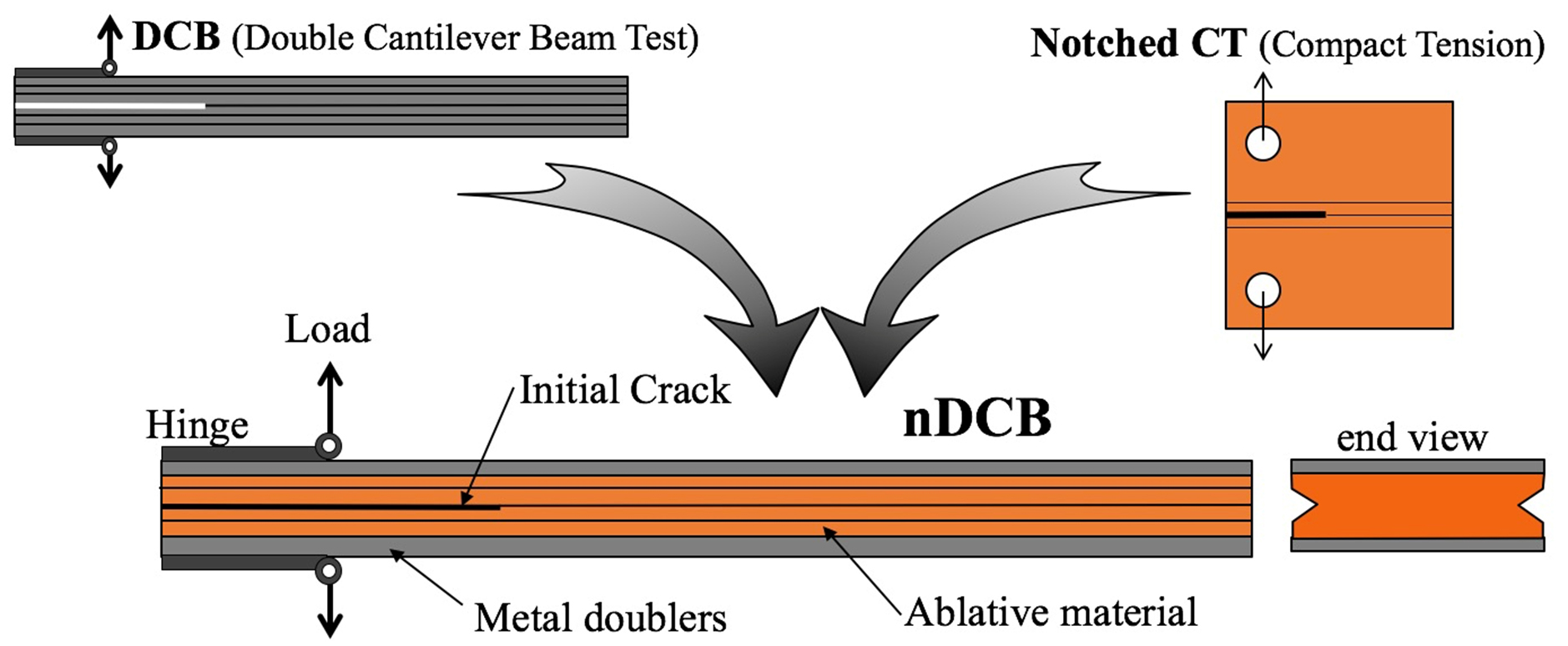The notched double cantilever beam (nDCB) test has been successfully used to measure the mode-I fracture toughness of an anisotropic ablative material used on the Orion crew module heatshield. The nDCB test was developed by combining the strengths and avoiding the weaknesses of two existing standard test methods, namely the double cantilever beam test and the compact tension test. The double cantilever beam test is a standard test for measuring the mode-I fracture toughness (GIc) of layered composite materials.
This test method has several strengths, such as its simplicity of execution and adaptability for use in environmental chambers. It also allows a compliance calibration method of fracture toughness calculation, which can be more robust when dealing with complex material systems. However, when this test method was used with the ablative material of interest, the crack front wandered away from the mid-plane of the specimen, violating the self-similar crack growth assumption inherent in measuring GIc. With a notched compact tension (CT) test specimen, planer crack growth was maintained, but it produces a toughness in terms of the critical stress intensity factor (KIc). Converting KIc back to a Glc needed for the analysis is not trivial due to the anisotropy of the material and introducing additional uncertainty in the toughness allowable. The notched computed tomography test is also focused on the initiation value of toughness while with complex nonhomogeneous materials where a damage field develops, a propagation value may be more appropriate. The nDCB test allows for propagation values to be calculated over several inches of crack growth. By combining the standard tests into the nDCB, a test was achieved that delivers a G-based fracture toughness over a significant distance of self-similar crack propagation using robust data reduction methods that are very similar to the standardized test.
For more information, contact Dr. James Ratcliffe, LaRC – james.g.ratcliffe@ nasa.gov or Vinay Goyal, The Aerospace Corporation – vinay.k.goyal@aero.org



























